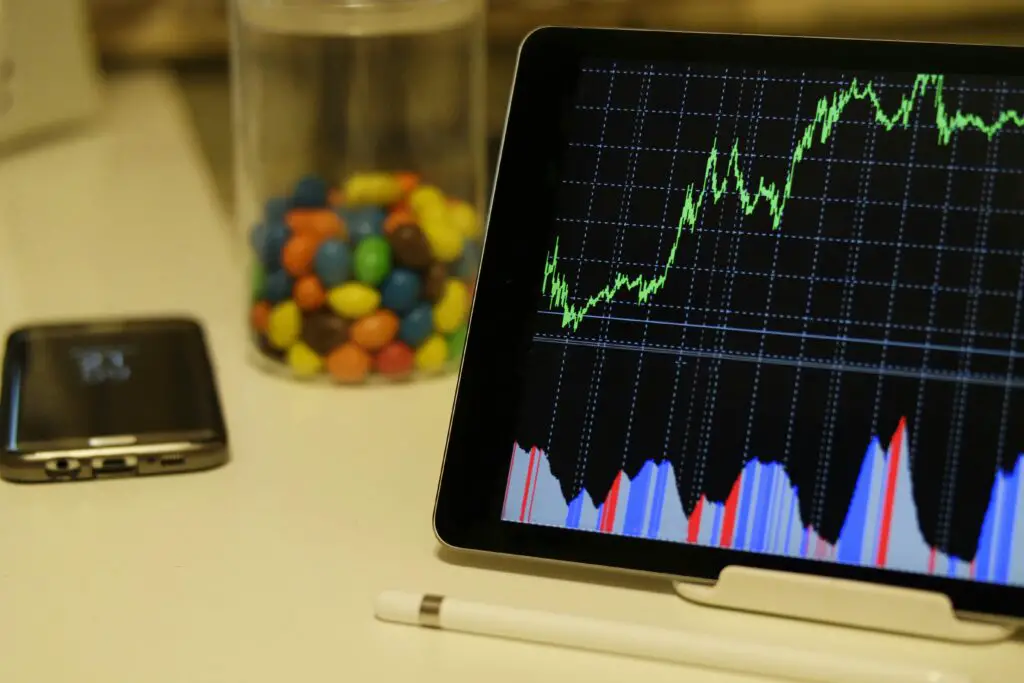The Beginning
High-frequency trading (HFT) is now the most essential thing in the fast-paced stock market world. People now buy and sell things differently because of it. Many people are interested in HFT because of new technologies and breakneck speeds. This is true for both good and bad reasons. In this article, we will talk in great depth about high-frequency trading, including how it works, how it impacts markets, the issues it brings up for lawmakers and what the future holds.

What does “High Frequency Trading” mean?
Many deals are made very quickly with the help of high-tech tools and complicated rules. The term for this is “high-frequency trading.” These programs rapidly look at market data, find opportunities to trade, and carry out orders. Many different HFT strategies are possible, such as market making, arbitrage, statistical arbitrage, flow trading, and more. HFT firms use speed and technology to make money by taking advantage of slight price differences and flaws in the market.
How High-Frequency Trading Has Changed Over Time
High-frequency trading comes from how technology and the stock market have changed. Trading used to be done by real people called traders who used manual methods and limited market data to carry out their clients’ orders. However, computer trading systems changed the way securities were bought and sold in a big way when they came out in the late 20th century. Because of this change, trade systems could be computerized, which led to the growth of high-frequency trading (HFT). High-Frequency Trading: How It Works
Many computer power colocation spaces and links with minimal delay make up the technology infrastructure that makes high-frequency trading possible. High-frequency traders (HFTs) can quickly get market data, process it, and trade with these tools. Market data feeds from platforms, and private data sources give HFT algorithms the information they need to decide what to trade quickly. They also have less impact on the market and make the most money because advanced order types and execution tools improve trade execution.
How to Understand Trading Strategies for High-Frequency
Complex math and cutting-edge technology are what make HFT work. They make trades happen at speeds that human traders could never imagine. Some of the most common types of these strategies are market-making arbitrage and directional trade. Market making means adding more money by showing both bid and ask prices and profiting from the difference between them. Arbitrage techniques use price differences between markets or types of assets to make money. They do this by taking advantage of chances that only last milliseconds. With directional investing, you try to make money when prices change quickly. They often use hard-to-understand statistical models and machine learning programs to try to guess what the market will do next.
How high-frequency trading works in terms of technology
A big part of HFT’s success is its use of high-tech infrastructure. Colocation services, uptorn low-latency connections, and high-speed data feeds are all essential parts that make it possible for HFT firms to make deals faster than anyone else. Processing is even faster when powerful computers with custom hardware accelerators are used. This lets studies and decisions happen in real time. Aside from that, HFT companies can better take advantage of short-term market opportunities since their computers are placed close to exchanges and latency is kept low.
Changes in the financial markets

High-frequency trade (HFT) has changed many things about how the money markets work. One significant result is that HFT companies actively place buy and sell orders. This makes it easier to find prices and narrows the bid-ask spread. However, some say that HFT can destabilize the market, mainly when uncertainty or unpredictability exists. People are also worried about the chance of market manipulation and the unfair benefits that HFT firms have because they are fast and can get private market data.
Problems with regulations and how to solve them
Governments all over the world need help with regulating high-frequency trade. The government balances letting new ideas grow and keeping the market fair and safe. Some things used to lower the risks of HFT are circuit breakers, minimum sitting times, and market maker duties. The government is also working harder to improve its market oversight and monitoring tools to find and stop wrongdoing immediately. Government rules are still changing to keep up with how high-frequency trade is changing, even with these changes.
Talks and controversies
People in business are still trying to figure out what to think about high-frequency trade. People who support HFT say that it makes markets work better, offers liquidity, and helps set prices, which is suitable for everyone in the long run. On the other hand, the people against it are worried about market manipulation, instability and unequal access to market knowledge. There are a lot of risks with high-frequency trading. One example is the “flash collapse” lost almost rising again.
What’s Next for High-Frequency Trading
We are still determining the future of high-frequency trading, but it looks good as technology keeps getting better and rules change. There is a chance that AI, Bitcoin machine learning, and other new technologies will shift HFT schemes and methods even more. To ensure fair and transparent trading, authorities, market players, and technology providers must work together more. It is essential for the future of financial markets that high-frequency trading keeps getting better and is used intelligently.
In conclusion
Because of new tools and the never-ending need for speed, high-frequency trading is now essential in the financial markets. Because of HFT, more people can buy and sell stuff on the market, making the market less stable and inefficient. Regulations will address these issues, but people must remain aware and adapt as high-frequency trading constantly changes. As investors, lawmakers, and market players try to navigate the complicated world of modern finance, they need to know how high-frequency trading works and what it means.

Best content